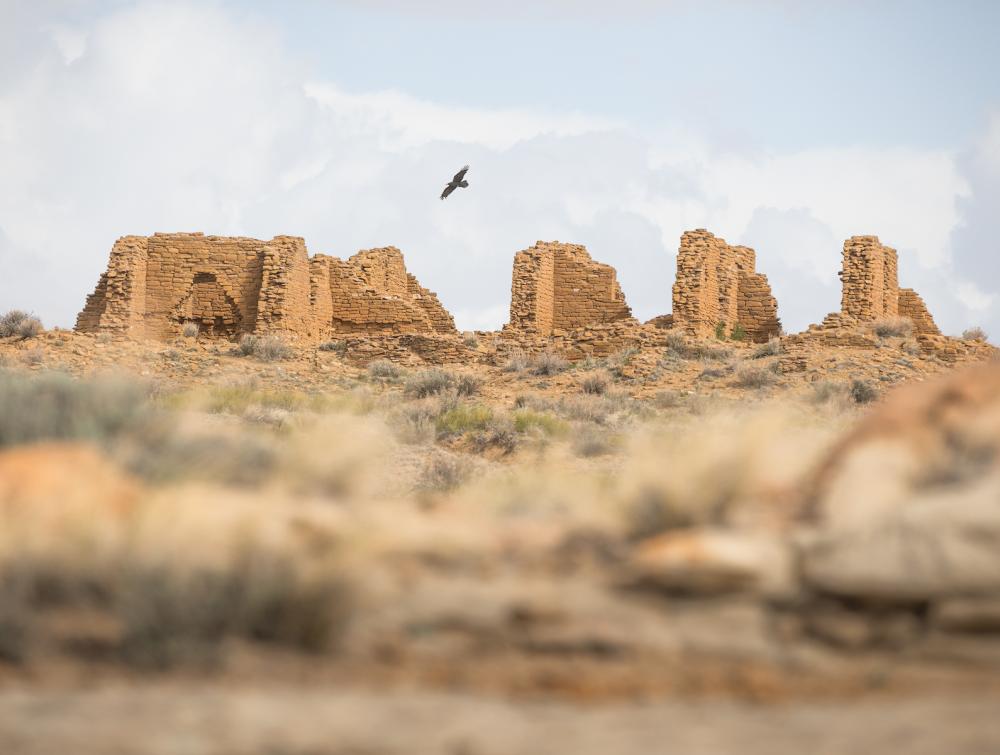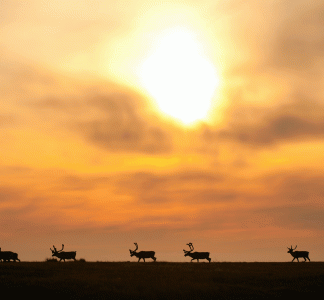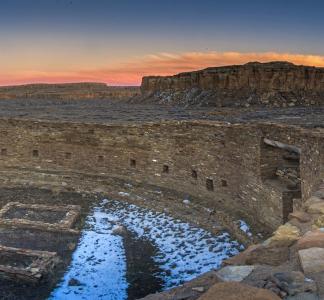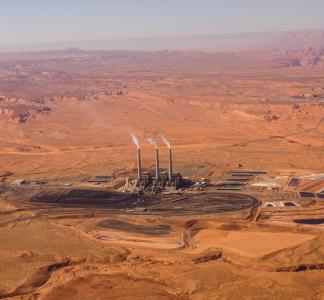A 2020 vision: 7 New Year’s resolutions for the climate and our public lands

Chaco Canyon National Historical Park, NM
Mason Cummings, TWS
New year brings opportunities to defend key laws, wild places
As we look back on 2019, it’s easy to feel discouraged. After all, the past year has brought ramped-up attacks on wildlands, all-new dirty tricks from the Trump administration and an ever greater understanding of just how dire the climate crisis is.
In 2020, we're determined to work with partners new and old in defending natural resources and a livable climate
But we saw some signs of hope too, with Congress lending support to a crucial land conservation program and communities standing up for wildlands in places like Washington state’s Methow Valley. It’s those victories that will buoy us as we charge into 2020, determined to work with partners new and old in defending natural resources and a livable climate.
These are our resolutions for the new year:
1. Recognize public lands as part of the climate change solution
Near the very end of 2019, a bill was introduced in the House that aims to rein in the country’s climate emissions by achieving net-zero emissions on public lands and waters by 2040. That’s no minor goal: the U.S. is the second-largest greenhouse gas emitter in the world behind China, and more than 20 percent of the nation’s total emissions come from fuels drilled on our shared lands.
Especially as we move into the thick of another presidential election cycle, the year 2020 will be a crucial time to advance an agenda for addressing climate change that recognizes the role of public lands. A comprehensive climate plan would not only cut emissions from energy development on public lands but increase responsible, carefully sited clean energy projects on those lands–for instance, on land that has already been degraded–and ensure resources like forests and grasslands, which capture large amounts of carbon from the atmosphere, are in good shape.
2. Make sure the wildest forests stay free of reckless logging
Late this past year, the Trump administration proposed eliminating protections to allow logging, road construction and other development in the wildest parts of Tongass National Forest, in Alaska. If that measure is successful, it will jeopardize one of the last remaining intact temperate rainforests in the world--plus a key tool for absorbing the emissions that are driving catastrophic climate change.
Sometime in 2020, we’re expecting the U.S. Forest Service to release its decision on whether and how to implement the proposal. We already helped drive thousands of public comments opposing the draft plan, and if the final Trump administration plan is as bad as we fear, we stand ready to fight it. Additionally, we’ll champion legislation that proactively defends and strengthens the Roadless Rule, the underlying law protecting the wildest parts of our national forests.
3. Protect “Too Wild to Drill” lands from destruction
As developers and fossil fuel companies grow bolder in their attempts to encroach on public lands and waters, aided by the Trump administration, the new year will bring many defensive challenges—but also opportunities to work with lawmakers at all levels and protect iconic landscapes.
For example, the Grand Canyon Centennial Protection Act, already passed in the House and introduced in the Senate in December 2019, brings us a step closer to permanent protection for Grand Canyon National Park and nearby public lands, which are home to several Native American tribes. Similarly, we are working to pass a bill that would protect Chaco Canyon, an ancient tribal historical and archaeological site in New Mexico. We are also trying to stymie a plan that would build a polluting copper mine in the watershed of the Boundary Waters-Canoe Area Wilderness in Minnesota, the nation’s most visited wilderness area and a world-renowned fishing and canoeing destination.
4. Increase access to the outdoors for all
One of our most important goals is ensuring everyone can enjoy parks and public lands, with special attention paid to increasing opportunities for urban communities that currently lack easy access to the outdoors. We’re seeing a lot of progress toward that goal at the national, state and local levels.
Among key opportunities, there is a proposal currently in Congress that would advance “Transit to Trails” programs, funding improved access to parks, public lands and green spaces from mass transportation, especially for critically underserved populations. Elsewhere, we’re working with lawmakers on comprehensive environmental justice legislation that would offer equitable access, job training and other resources for frontline communities—predominantly people of color and indigenous and low-income populations that are disproportionately impacted by pollution and environmental threats.
More: Many communities lack access to parks; programs like Trailhead Direct can help
5. Ensure full funding for our parks and shared spaces
The Land and Water Conservation Fund, or LWCF, is an extraordinary conservation success story, protecting iconic landscapes and local parks in all 50 states at no cost to taxpayers. Since the 1960s, it has been used to pay for everything from ensuring access to your favorite trail or climbing area; to protecting critical parts of our national parks from development; to investing in local soccer fields and swimming pools. The program has a critical role to play in helping public lands adapt to the impacts of climate change, too.
In February 2019, Congress reauthorized LWCF, but we’re still trying to get lawmakers to provide full and permanent funding for the program. Moving into 2020, we expect opportunities to remind leaders how vital LWCF is and work with them to secure it in full.
6. Preserve our most important environmental transparency law
January 1, 2020, will mark the 50th anniversary of the National Environmental Policy Act, or NEPA. NEPA is a true bedrock conservation law that ensures public input and scientific oversight when the government embarks on new projects. For example, because of NEPA, an agency can’t decide to cut down old-growth national forests without first explaining their plan and offering it up for public scrutiny.
But the Trump administration and its partners in Congress have been working overtime to erode the law and make it easier to keep the public in the dark about actions that might end up hurting their communities or shared lands and waters. They want government to be less transparent and less accountable to the people it governs. We’re working to fend off these kinds of attacks and will be asking our members and supporters for their help to preserve NEPA in the months ahead.
More: Law makes the government consider how its actions will affect the environment
7. Hold the line and defend the Arctic Refuge
In the coming months, we expect the Trump administration to release a final leasing plan for fossil fuel development on the coastal plain of the Arctic National Wildlife Refuge in Alaska. If drilling is allowed to happen in the refuge, the resulting traffic, noise and construction would threaten the Porcupine caribou herd that migrates to the coastal plain of the refuge to calf their young each spring. This development would directly hurt the Gwich’in people who have built their communities on the migration path of the caribou. We stand ready to oppose that plan.
Fortunately, we do have allies in this cause. Just a few months ago, lawmakers in the House passed legislation that would halt the Trump administration in its efforts to pursue oil drilling in the Arctic National Wildlife Refuge. It was the first stand-alone bill the chamber has passed to protect the refuge, and a powerful sign that we have the wind at our backs. Working together, we will protect the Arctic Refuge, one of the world’s most spectacular, pristine wild places.



